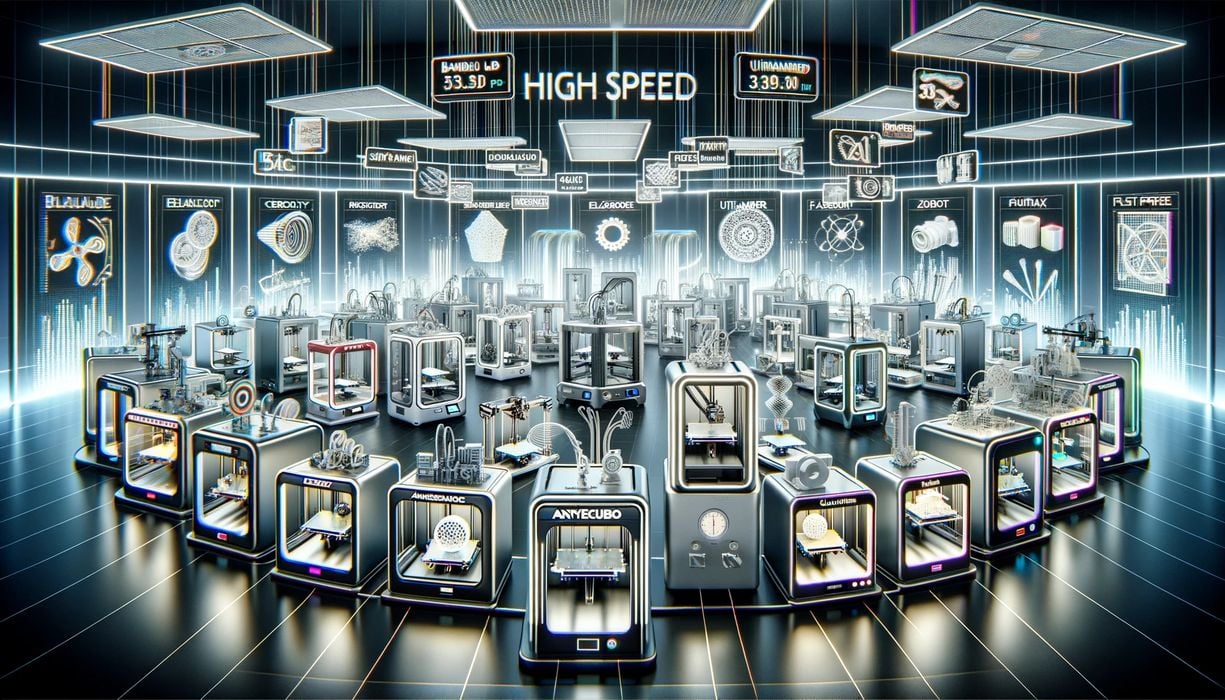
In the confusing world of high speed desktop 3D printing, which companies present the proper specifications?
Readers may know that in the past year there has been an explosion of high speed desktop 3D printers. These have been enabled by advances in firmware that allow for dynamic compensation of the effects of high speed activity. First appearing in Klipper, the features are now also present in Marlin, making them available to almost all device makers.
As a result we have a number of new machines touting “high speed” operations.
The problem is that no one really knows what “high speed” actually means.
Some manufacturers simply tune up their existing equipment a tad and label it as “high speed”. Others re-engineer the entire platform from top to bottom and also call it “high speed”. Some require the use of “high speed” materials, and those are also inconsistently labeled.
Some manufacturers specify a print “speed”, or the speed at which the toolhead can move and still competently print. (“Competently” is another vague term to be sure.)
The problem is that the speed specification is also inconsistent because we don’t know at which layer height the measurement took place. A 0.1mm layer print can move very quickly, while a 0.4mm layer print would have to deliver much more material to move at the same speed.
Basically, speed specifications are almost totally meaningless.
So what might be a better specification? I think it’s the volumetric capacity of the extrusion system. The 0.4mm layer job above would fail at the same speed because the extruder can’t deliver enough material at higher speeds.
Every FFF desktop 3D printer’s extrusion system has a maximum capacity, the volume of material that can reliably be delivered per second. As you can see, a thin layer would be more easily handled than a thick layer.
I would like to see desktop FFF 3D printer manufacturers specify the volumetric capacity, or maximum flow rate, of their device alongside other key specs like build volume, temperatures, etc.
If they did so, then those “high speed” pronouncements could have some context.
But do manufacturers publish this spec? I checked with a number of popular equipment manufacturers and their leading models to see if they do. Here’s what I found:
| MANUFACTURER | MODEL | FLOW RATE SPEC |
| AnkerMake | M5C | 35 |
| Anycubic | Kobra 2 Pro | N/A |
| Bambu Lab | X1C | 32 |
| A1 | N/A | |
| CraftBot | Plus Pro | N/A |
| Creality | K1 | 32 |
| Ender-3 V3 Se | N/A | |
| ELEGOO | Neptune 4 Plus | N/A |
| FlashForge | Adventurer 5M Pro | N/A |
| LulzBot | TAZ Pro | N/A |
| Prusa Research | MK4 | N/A |
| Raise3D | Pro3 HyperFFF | N/A |
| UltiMaker | S5 | N/A |
| S7 | N/A | |
| Zortrax | M300 Plus | N/A |
The data shows that of the 15 device spec sheets examined online, only three specified the maximum flow rate.
That’s not good, and shows how confusing this industry is at the moment. Note that even within a manufacturer, not all models will specify the maximum flow rate. It may be that some manufacturers do not wish to publish this specification, as their models might fall below their competitors.
Could everyone please publish maximum flow rates so we can compare devices properly?
